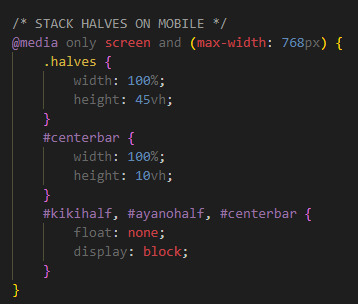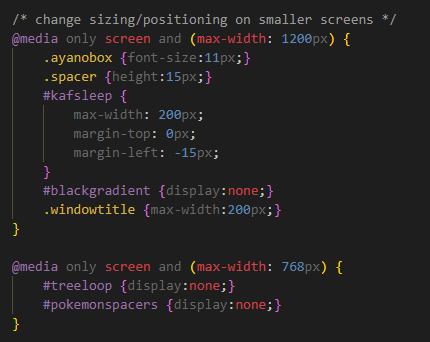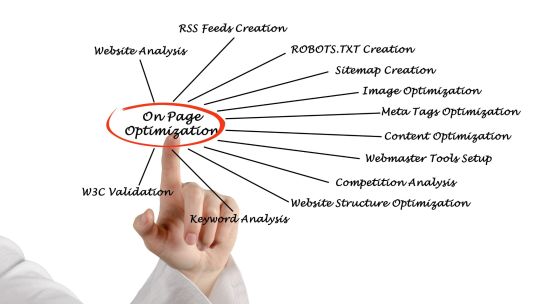#media queries responsive web design
Explore tagged Tumblr posts
Text
Essentials You Need to Become a Web Developer
HTML, CSS, and JavaScript Mastery
Text Editor/Integrated Development Environment (IDE): Popular choices include Visual Studio Code, Sublime Text.
Version Control/Git: Platforms like GitHub, GitLab, and Bitbucket allow you to track changes, collaborate with others, and contribute to open-source projects.
Responsive Web Design Skills: Learn CSS frameworks like Bootstrap or Flexbox and master media queries
Understanding of Web Browsers: Familiarize yourself with browser developer tools for debugging and testing your code.
Front-End Frameworks: for example : React, Angular, or Vue.js are powerful tools for building dynamic and interactive web applications.
Back-End Development Skills: Understanding server-side programming languages (e.g., Node.js, Python, Ruby , php) and databases (e.g., MySQL, MongoDB)
Web Hosting and Deployment Knowledge: Platforms like Heroku, Vercel , Netlify, or AWS can help simplify this process.
Basic DevOps and CI/CD Understanding
Soft Skills and Problem-Solving: Effective communication, teamwork, and problem-solving skills
Confidence in Yourself: Confidence is a powerful asset. Believe in your abilities, and don't be afraid to take on challenging projects. The more you trust yourself, the more you'll be able to tackle complex coding tasks and overcome obstacles with determination.
#code#codeblr#css#html#javascript#java development company#python#studyblr#progblr#programming#comp sci#web design#web developers#web development#website design#webdev#website#tech#html css#learn to code
2K notes
·
View notes
Text
Living online means never quite understanding what’s happening to you at a given moment. Why these search results? Why this product recommendation? There is a feeling—often warranted, sometimes conspiracy-minded—that we are constantly manipulated by platforms and websites.
So-called dark patterns, deceptive bits of web design that can trick people into certain choices online, make it harder to unsubscribe from a scammy or unwanted newsletter; they nudge us into purchases. Algorithms optimized for engagement shape what we see on social media and can goad us into participation by showing us things that are likely to provoke strong emotional responses. But although we know that all of this is happening in aggregate, it’s hard to know specifically how large technology companies exert their influence over our lives.
This week, Wired published a story by the former FTC attorney Megan Gray that illustrates the dynamic in a nutshell. The op-ed argued that Google alters user searches to include more lucrative keywords. For example, Google is said to surreptitiously replace a query for “children’s clothing” with “NIKOLAI-brand kidswear” on the back end in order to direct users to lucrative shopping links on the results page. It’s an alarming allegation, and Ned Adriance, a spokesperson for Google, told me that it’s “flat-out false.” Gray, who is also a former vice president of the Google Search competitor DuckDuckGo, had seemingly misinterpreted a chart that was briefly presented during the company’s ongoing U.S. et al v. Google trial, in which the company is defending itself against charges that it violated federal antitrust law. (That chart, according to Adriance, represents a “phrase match” feature that the company uses for its ads product; “Google does not delete queries and replace them with ones that monetize better as the opinion piece suggests, and the organic results you see in Search are not affected by our ads systems,” he said.)
Gray told me, “I stand by my larger point—the Google Search team and Google ad team worked together to secretly boost commercial queries, which triggered more ads and thus revenue. Google isn’t contesting this, as far as I know.” In a statement, Chelsea Russo, another Google spokesperson, reiterated that the company’s products do not work this way and cited testimony from Google VP Jerry Dischler that “the organic team does not take data from the ads team in order to affect its ranking and affect its result.” Wired did not respond to a request for comment. Last night, the publication removed the story from its website, noting that it does not meet Wired’s editorial standards.
It’s hard to know what to make of these competing statements. Gray’s specific facts may be wrong, but the broader concerns about Google’s business—that it makes monetization decisions that could lead the product to feel less useful or enjoyable—form the heart of the government’s case against the company. None of this is easy to untangle in plain English—in fact, that’s the whole point of the trial. For most of us, evidence about Big Tech’s products tends to be anecdotal or fuzzy—more vibes-based than factual. Google may not be altering billions of queries in the manner that the Wired story suggests, but the company is constantly tweaking and ranking what we see, while injecting ads and proprietary widgets into our feed, thereby altering our experience. And so we end up saying that Google Search is less useful now or that shopping on Amazon has gotten worse. These tools are so embedded in our lives that we feel acutely that something is off, even if we can’t put our finger on the technical problem.
That’s changing. In the past month, thanks to a series of antitrust actions on behalf of the federal government, hard evidence of the ways that Silicon Valley’s biggest companies are wielding their influence is trickling out. Google’s trial is under way, and while the tech giant is trying to keep testimony locked down, the past four weeks have helped illustrate—via internal company documents and slide decks like the one cited by Wired—how Google has used its war chest to broker deals and dominate the search market. Perhaps the specifics of Gray’s essay were off, but we have learned, for instance, how company executives considered adjusting Google’s products to lead to more “monetizable queries.” And just last week, the Federal Trade Commission filed a lawsuit against Amazon alleging anticompetitive practices. (Amazon has called the suit “misguided.”)
Filings related to that suit have delivered a staggering revelation concerning a secretive Amazon algorithm code-named Project Nessie. The particulars of Nessie were heavily redacted in the public complaint, but this week The Wall Street Journal revealed details of the program. According to the unredacted complaint, a copy of which I have also viewed, Nessie—which is no longer in use—monitored industry prices of specific goods to determine whether competitors were algorithmically matching Amazon’s prices. In the event that competitors were, Nessie would exploit this by systematically raising prices on goods across Amazon, encouraging its competitors to follow suit. Amazon, via the algorithm, knew that it would be able to charge more on its own site, because it didn’t have to worry about being undercut elsewhere, thereby making the broader online shopping experience worse for everyone. An Amazon spokesperson told the Journal that the FTC is mischaracterizing the tool, and suggested that Nessie was a way to monitor competitor pricing and keep price-matching algorithms from dropping prices to unsustainable levels (the company did not respond to my request for comment).
In the FTC’s telling, Project Nessie demonstrates the sheer scope of Amazon’s power in online markets. The project arguably amounted to a form of unilateral price fixing, where Amazon essentially goaded its competitors into acting like cartel members without even knowing they’d done so—all while raising prices on consumers. It’s an astonishing form of influence, powered by behind-the-scenes technology.
The government will need to prove whether this type of algorithmic influence is illegal. But even putting legality aside, Project Nessie is a sterling example of the way that Big Tech has supercharged capitalistic tendencies and manipulated markets in unnatural and opaque ways. It demonstrates the muscle that a company can throw around when it has consolidated its position in a given sector. The complaint alleges that Amazon’s reach and logistics capabilities force third-party sellers to offer products on Amazon and for lower prices than other retailers. Once it captured a significant share of the retail market, Amazon was allegedly able to use algorithmic tools such as Nessie to drive prices up for specific products, boosting revenues and manipulating competitors.
Reading about Project Nessie, I was surprised to feel a sense of relief. In recent years, customer-satisfaction ratings have dipped among Amazon shoppers who have cited delivery disruptions, an explosion of third-party sellers, and poor-quality products as reasons for frustration. In my own life and among friends and relatives, there has been a growing feeling that shopping on the platform has become a slog, with fewer deals and far more junk to sift through. Again, these feelings tend to occupy vibe territory: Amazon’s bigness seems stifling or grating in ways that aren’t always easy to explain. But Nessie offers a partial explanation for this frustration, as do revelations about Google’s various product adjustments. We have the sense that we’re being manipulated because, well, we are. It’s a bit like feeling vaguely sick, going to the doctor, and receiving a blood-test result confirming that, yes, the malaise you experienced is actually an iron deficiency. It is the catharsis of, at long last, receiving a diagnosis.
This is the true power of the surge in anti-monopoly litigation. (According to experts in the field, September was “the most extraordinary month they have ever seen in antitrust.”) Whether or not any of these lawsuits results in corporate breakups or lasting change, they are, effectively, an MRI of our sprawling digital economy—a forensic look at what these larger-than-life technology companies are really doing, and how they are exerting their influence and causing damage. It is confirmation that what so many of us have felt—that the platforms dictating our online experiences are behaving unnaturally and manipulatively—is not merely a paranoid delusion, but the effect of an asymmetrical relationship between the giants of scale and us, the users.
In recent years, it’s been harder to love the internet, a miracle of connectivity that feels ever more bloated, stagnant, commercialized, and junkified. We are just now starting to understand the specifics of this transformation—the true influence of Silicon Valley’s vise grip on our lives. It turns out that the slow rot we might feel isn’t just in our heads, after all.
213 notes
·
View notes
Text
Resource: Responsive Web Design
Starter kit basically.. for those working on jcink skins. Viewport plus using media queries, css variables, grid, and flex will ease the process of making responsive skins but I advise keeping them in mind early on.
10 notes
·
View notes
Text

💜 Showcase Saturday #3: Ooops.lol 💜
This weekend's Small Web showcase feature is Ooops.lol; a pocket of the small web where code, creativity, and personal expression thrive. Z, the mind behind the site, has been coding since the Neopets era—back when tweaking premade layouts was the ultimate form of customization. Their passion for cobbling together code reignited in 2023 through Grundo’s Cafe, and now, this site is a space for them to experiment, build, and share. With a deep interest in media analysis, food science, and accessibility, Z approaches web design with both a technical and thoughtful touch, making the internet a little more inclusive while having fun along the way.
Beyond coding, Z is a gamer at heart, with a particular love for roguelikes, and an anime enthusiast always on the hunt for the next great watch. When they’re not immersed in digital worlds, they enjoy tending to their garden—whenever their health allows. Chronic illness has shaped their approach to creativity, shifting their focus from productivity to pure enjoyment. Free from the pressures of work and social media, they’ve reclaimed their artistic spark, letting ideas grow naturally, much like the sunflowers in lead-laced soil that they compare their website to—healing and transformative.
Accessibility is a major focus of Ooops.lol, as Z often browses the web from a mobile device. Their goal is to refine their skills with media queries and JavaScript, crafting responsive templates and easy-to-use accessibility scripts to help others make their sites more user-friendly. This ever-evolving site is a testament to intentional creation, built not for algorithms but for people. With pages dedicated to personal musings, favorite things, their beloved Bengal cats, and a manifesto of their digital philosophy, Ooops.lol is an inviting, unconventional space that encourages visitors to stay a while and explore.
👉 Check their site out here: https://ooops.lol/
--------------------------------------------------------------------------
Want to help the Small Web movement grow? Join us on other platforms. ♥
FB Page & Group: facebook.com/thesmallweb facebook.com/groups/thesmallweb Twitter/X: x.com/smallweblove Tumblr Community: tumblr.com/communities/thesmallweb Mastodon: indieweb.social/@thesmallweb
#indie web#small web#old web#blog#neocities#old internet#web revival#indieweb#smallweb#y2k#internet nostalgia#social networks#nekoweb#nostalgia#2000s web#2000s nostalgia#decentralized social media#decentralization
7 notes
·
View notes
Text
AGARTHA Aİ - DEVASA+ (2)

In today’s digital landscape, a captivating and functional website is crucial for any business looking to thrive online. Full service web design encompasses a comprehensive approach, ensuring every aspect of your site is tailored to meet your unique needs. From the initial concept to the final launch, this service provides an array of offerings, including website service, responsive web design, and custom design services. Whether you’re a startup seeking to establish your brand or an established enterprise aiming to enhance your online presence, understanding the elements of full service web design is essential.
Full service web design
Full service web design encompasses all aspects of creating a website, from initial conceptualization to ongoing maintenance. This approach ensures that every detail is carefully considered to meet the specific needs of a business or individual. With a team of experienced designers and developers, full service web design offers a seamless experience that integrates aesthetics, functionality, and user experience.
One of the key advantages of opting for a full service web design is the cohesion of the website elements. Since all parts of the project are managed by a single team, there is less chance for miscommunication or inconsistency in design. This results in a more polished final product that reflects the brand’s identity while providing an engaging experience for visitors.
Additionally, full service web design allows for customized solutions tailored to unique requirements. Whether you need an e-commerce platform, a portfolio site, or a blog, a full service provider will offer dedicated support and expert advice throughout the entire process, ensuring your vision comes to life exactly as you imagined.
Website service
In today's digital landscape, website service is essential for businesses to thrive and maintain an online presence. A well-structured website serves as a powerful tool that encourages customer engagement and drives sales. By investing in a comprehensive website service, businesses can ensure that their website not only looks great but also functions seamlessly across all devices.
A key aspect of website service is the ability to optimize for search engines. By implementing SEO best practices, businesses can enhance their visibility and attract more organic traffic. This is where a reliable website service provider plays a crucial role, as they possess the expertise and techniques necessary to elevate your search engine rankings.
Furthermore, ongoing support and maintenance are vital components of a reliable website service. As technology evolves and user needs change, having a team that can promptly address issues or updates will keep your website relevant and effective in reaching target audiences. This ongoing relationship is instrumental in achieving long-term success in the digital realm.
Responsive web design
Responsive web design is an essential aspect of modern web development that ensures a seamless user experience across a variety of devices. With the increasing use of smartphones and tablets, having a website that adapts to different screen sizes is not just a luxury but a necessity.
The core principle of responsive web design is fluidity. This means that the layout of your website adjusts dynamically based on the screen width, ensuring that content remains accessible and visually appealing regardless of the device used. This approach improves usability and can significantly boost conversion rates.
Incorporating responsive web design techniques involves using flexible grids, images, and CSS media queries. These elements work together to create a layout that responds gracefully to changes in screen size, making your website not only functional but also competitive in the digital marketplace.
Custom design services
In today's digital landscape, custom design services have emerged as a vital component of creating a strong online presence. Businesses understand that a one-size-fits-all approach does not cater to their unique needs and branding. Therefore, opting for custom design services allows them to differentiate themselves in a crowded market.
These services offer tailored solutions that resonate with a company's specifics, from colors to typography and layout. By leveraging custom design services, businesses can ensure that their websites not only reflect their brand identity but also provide an intuitive user experience. This is crucial for keeping visitors engaged and encouraging them to take the desired actions.
Investing in custom design services ultimately contributes to better customer satisfaction and improved conversion rates. With a website designed specifically for their target audience, businesses can more effectively communicate their message and achieve their goals. This bespoke approach is invaluable in today's competitive environment.
43 notes
·
View notes
Text
i'm thinking more about the whole mobile/responsive design thing and i'm realizing that part of the reason people never do it on neocities is probably because they look at responsive web design stuff and get overwhelmed and leave since a lot of the resources on it out there are for like... professionals, modern web design stuff. there isn't a ton of easy-to-read information on it for hobbyists or beginners or anyone making websites on the simpler side, or in old styles.
most of my webpages use a mix of hiding or showing elements based on screen size, and then at certain screen sizes, changing the display property of an element that would usually be side-by-side with something else on desktop to "block" to make it stack vertically. all blue moon falls does to be mobile friendly is hide the sidebars on small screens and then display the mobile menu on top instead... and then it changes some elements in certain articles to block so they aren't super narrow/squished. that's about it
of course BMF has the benefit of being very simple and functional in design, not covered in graphics and whatnot. but like -
even stuff like this is just a few media queries -




and some of this is kind of excessive because i'm very detail oriented and want to adjust every little thing... the actual positioning of elements and their sizes is not that much. it really is doable!!
49 notes
·
View notes
Text
Your Guide to Choosing the Right AI Tools for Small Business Growth
In state-of-the-art speedy-paced international, synthetic intelligence (AI) has come to be a game-changer for businesses of all sizes, mainly small corporations that need to stay aggressive. AI tools are now not constrained to big establishments; less costly and available answers now empower small groups to improve efficiency, decorate patron experience, and boost revenue.

Best AI tools for improving small business customer experience
Here’s a detailed review of the top 10 AI tools that are ideal for small organizations:
1. ChatGPT by using OpenAI
Category: Customer Support & Content Creation
Why It’s Useful:
ChatGPT is an AI-powered conversational assistant designed to help with customer service, content creation, and more. Small companies can use it to generate product descriptions, blog posts, or respond to purchaser inquiries correctly.
Key Features:
24/7 customer service via AI chatbots.
Easy integration into web sites and apps.
Cost-powerful answers for growing enticing content material.
Use Case: A small e-trade commercial enterprise makes use of ChatGPT to handle FAQs and automate patron queries, decreasing the workload on human personnel.
2. Jasper AI
Category: Content Marketing
Why It’s Useful:
Jasper AI specializes in generating first rate marketing content. It’s ideal for creating blogs, social media posts, advert reproduction, and extra, tailored to your emblem’s voice.
Key Features:
AI-powered writing assistance with customizable tones.
Templates for emails, advertisements, and blogs.
Plagiarism detection and search engine optimization optimization.
Use Case: A small enterprise owner uses Jasper AI to create search engine optimization-pleasant blog content material, enhancing their website's visibility and traffic.
Three. HubSpot CRM
Category: Customer Relationship Management
Why It’s Useful:
HubSpot CRM makes use of AI to streamline purchaser relationship control, making it less difficult to music leads, control income pipelines, and improve consumer retention.
Key Features:
Automated lead scoring and observe-ups.
AI insights for customized purchaser interactions.
Seamless integration with advertising gear.
Use Case: A startup leverages HubSpot CRM to automate email follow-ups, increasing conversion costs without hiring extra staff.
Four. Hootsuite Insights Powered by means of Brandwatch
Category: Social Media Management
Why It’s Useful:
Hootsuite integrates AI-powered social media insights to help small businesses tune tendencies, manipulate engagement, and optimize their social media method.
Key Features:
Real-time social listening and analytics.
AI suggestions for content timing and hashtags.
Competitor evaluation for a competitive aspect.
Use Case: A nearby café uses Hootsuite to agenda posts, tune customer feedback on social media, and analyze trending content material ideas.
Five. QuickBooks Online with AI Integration
Category: Accounting & Finance
Why It’s Useful:
QuickBooks Online automates bookkeeping responsibilities, rate monitoring, and economic reporting using AI, saving small agencies time and reducing mistakes.
Key Features:
Automated categorization of costs.
AI-driven economic insights and forecasting.
Invoice generation and price reminders.
Use Case: A freelance photo designer uses QuickBooks to simplify tax practise and hold tune of assignment-primarily based earnings.
6. Canva Magic Studio
Category: Graphic Design
Why It’s Useful:
Canva Magic Studio is an AI-more advantageous design tool that empowers non-designers to create stunning visuals for marketing, social media, and presentations.
Key Features:
AI-assisted layout guidelines.
One-click background elimination and resizing.
Access to templates, inventory pictures, and videos.
Use Case: A small bakery makes use of Canva Magic Studio to create pleasing Instagram posts and promotional flyers.
7. Grammarly Business
Category: Writing Assistance
Why It’s Useful:
Grammarly Business guarantees that each one written communications, from emails to reviews, are expert and blunders-unfastened. Its AI improves clarity, tone, and engagement.
Key Features:
AI-powered grammar, spelling, and style corrections.
Customizable tone adjustments for branding.
Team collaboration gear.
Use Case: A advertising company makes use of Grammarly Business to make sure consumer proposals and content material are polished and compelling.
Eight. Zapier with AI Automation
Category: Workflow Automation
Why It’s Useful:
Zapier connects apps and automates workflows without coding. It makes use of AI to signify smart integrations, saving time on repetitive tasks.
Key Features:
Automates responsibilities throughout 5,000+ apps.
AI-pushed recommendations for green workflows.
No coding required for setup.
Use Case: A small IT consulting corporation makes use of Zapier to routinely create tasks in their assignment management device every time a brand new lead is captured.
9. Surfer SEO
Category: Search Engine Optimization
Why It’s Useful:
Surfer SEO uses AI to assist small businesses improve their internet site’s seek engine scores thru content material optimization and keyword strategies.
Key Features:
AI-pushed content audit and optimization.
Keyword studies and clustering.
Competitive evaluation equipment.
Use Case: An on-line store uses Surfer search engine marketing to optimize product descriptions and blog posts, increasing organic site visitors.
10. Loom
Category: Video Communication
Why It’s Useful:
Loom lets in small groups to create video messages quick, which are beneficial for group collaboration, client updates, and customer service.
Key Features:
Screen recording with AI-powered editing.
Analytics for viewer engagement.
Cloud garage and smooth sharing hyperlinks.
Use Case: A digital advertising consultant makes use of Loom to offer video tutorials for customers, improving expertise and lowering in-man or woman conferences.
Why Small Businesses Should Embrace AI Tools
Cost Savings: AI automates repetitive duties, reducing the need for extra group of workers.
Efficiency: These equipment streamline operations, saving time and increasing productiveness.
Scalability: AI permits small organizations to manipulate boom with out full-size infrastructure changes.
Improved Customer Experience: From personalized tips to 24/7 help, AI gear help small groups deliver superior customer service.
3 notes
·
View notes
Text
Spacing and Sizing in Web Design 📐✨
Understanding spacing and sizing is crucial for creating an intuitive and visually appealing web design. Let’s break it down!
1. What is Spacing?
Margin: The space outside an element. It controls how far apart elements are from each other.
Padding: The space inside an element. It affects the space between the content and the element’s border.
2. Why is Spacing Important?
Readability: Adequate spacing improves text readability and overall user experience.
Hierarchy: Proper spacing can help establish a visual hierarchy, guiding users’ attention to important elements.
Aesthetics: Well-spaced designs look cleaner and more professional.
3. Sizing Elements
Fixed Sizes: Set dimensions that won’t change regardless of the viewport (e.g., width: 200px;).
Fluid Sizes: Use percentages or viewport units (e.g., width: 50%;) for a responsive design that adapts to different screen sizes.
Responsive Design: Combine fixed and fluid sizing with media queries to ensure elements resize appropriately on various devices.
4. The Role of Interior Spacing
Example: Buttons: The size of a button is influenced by both its width/height and its padding. A button with too little padding may look cramped, while excessive padding can make it appear too large.
5. Best Practices for Spacing and Sizing
Consistent Units: Use consistent units (like rem or em) to maintain scalability across your design.
Grid Systems: Implement a grid layout for balanced spacing and sizing, making the design more predictable and user-friendly.
Whitespace: Don’t underestimate the power of whitespace; it enhances focus and reduces clutter.
6. Testing and Iteration
Regularly test your designs on various devices to ensure spacing and sizing work well in all contexts.
Gather feedback from users to identify areas needing adjustments.
Quick Tips:
Aim for a harmonious balance between spacing and sizing.
Use design tools or frameworks that offer predefined spacing/sizing options.
Be mindful of touch targets; ensure buttons and links are large enough for easy interaction.
Mastering spacing and sizing will elevate your web design, making it more functional and visually appealing! 🌟
----------
What marketing strategies are you excited to try this year? Let’s share ideas and inspire each other! Visit Our Web Design Blog!
5 notes
·
View notes
Text
How to Create Mobile-Friendly Websites with Responsive Design
In today’s digital era, where mobile devices dominate web traffic, creating mobile-friendly websites has become more important than ever. As users increasingly access the internet through smartphones and tablets, businesses must ensure their websites are optimized for a seamless mobile experience. This is where responsive design comes into play. At Nividaweb, a leading responsive web design agency in Vadodara, we specialize in crafting websites that look and perform flawlessly on any device.

Here is a comprehensive guide on how to create mobile-friendly websites with responsive design:
What is Responsive Design?
Responsive web design is a design approach that ensures a website's layout and content adapt dynamically to different screen sizes and resolutions. Whether your users are browsing on a desktop, tablet, or smartphone, a responsive website delivers a consistent and user-friendly experience. This adaptability is essential for improving user engagement, reducing bounce rates, and enhancing overall website performance.
Why Responsive Design Matters?
Before diving into the how-to, let us understand why responsive design is crucial:
Improved User Experience: A responsive website ensures that users can navigate and interact with your site effortlessly, regardless of their device.
Higher Search Engine Rankings: Search engines like Google prioritize mobile-friendly websites in their rankings, making responsive design a key factor in SEO.
Increased Conversion Rates: With a user-friendly interface, responsive websites encourage visitors to stay longer and take action, boosting conversions.
Cost-Effective Maintenance: Instead of maintaining separate websites for desktop and mobile users, a responsive design simplifies updates and reduces costs.
Steps to Create a Mobile-Friendly Website with Responsive Design
1. Start with a Mobile-First Approach
The mobile-first approach involves designing the website for smaller screens first and then scaling up for larger devices. This method ensures that the core elements are optimized for mobile users. A responsive web design company in Vadodara like Nividaweb emphasizes this approach to ensure a seamless user experience on all devices.
2. Use a Flexible Grid Layout
A flexible grid layout is the foundation of responsive design. It allows website elements to adjust proportionally based on the screen size. Instead of fixed-width layouts, use percentages and relative units like ems or rems to define dimensions. This ensures that your website adapts smoothly to different screen resolutions.
3. Optimize Images and Media
Large images and media files can slow down your website, especially on mobile devices. To enhance performance:
Use responsive images that scale according to screen size.
Implement modern image formats like WebP for better compression.
Use CSS media queries to serve appropriate image sizes based on the user’s device.
At Nividaweb, a trusted responsive website design company in Gujarat, we leverage advanced tools to optimize images and improve loading times.
4. Implement CSS Media Queries
CSS media queries are essential for responsive design. They enable you to apply specific styles based on the device’s characteristics, such as screen width, height, or resolution.
5. Prioritize Touch-Friendly Navigation
Mobile users interact with websites using touch gestures, so it is essential to design navigation that is easy to use. Key considerations include:
Larger buttons and clickable areas.
Simplified menus with collapsible options for smaller screens.
Avoiding hover-dependent features, as they do not work well on touch devices.
6. Test on Multiple Devices and Browsers
Testing is a critical step in creating a mobile-friendly website. Use tools like Google’s Mobile-Friendly Test and browser developer tools to simulate various devices and screen sizes. Additionally, test your website on physical devices to identify and resolve any usability issues.
7. Ensure Fast Loading Times
Mobile users expect websites to load quickly. A slow-loading site can lead to higher bounce rates and lost opportunities. To optimize loading times:
Minimize HTTP requests by combining CSS and JavaScript files.
Enable browser caching and compression.
Use a Content Delivery Network (CDN) to deliver content faster.
As a responsive web design company in Vadodara, Nividaweb employs performance optimization techniques to ensure your website loads swiftly across all devices.
8. Leverage Responsive Typography
Typography plays a crucial role in readability and user experience. Use scalable fonts that adapt to screen sizes and maintain legibility on smaller devices. Tools like CSS’s viewport units (e.g., vw, vh) can help create fluid typography that adjusts dynamically.
9. Incorporate Mobile-Friendly Features
Enhance your website's usability by integrating features tailored for mobile users:
Click-to-call buttons for quick communication.
Location-based services like maps.
Fast and secure payment options for e-commerce websites.
10. Work with Experts in Responsive Design
Creating a truly responsive and mobile-friendly website requires expertise and experience. Partnering with a reputable responsive web design agency in Vadodara, like Nividaweb, ensures that your website meets the highest standards of design and functionality.
Why Choose Nividaweb for Responsive Website Design
Nividaweb is a leading responsive website design company in Gujarat, dedicated to transforming your online presence. Here is why businesses trust us:
Tailored Solutions: We understand that every business is unique. Our team works closely with clients to deliver customized designs that align with their brand identity and goals.
Cutting-Edge Technologies: We stay ahead of industry trends and utilize the latest tools and techniques to create responsive websites.
Experienced Team: Our skilled designers and developers have extensive experience in crafting mobile-friendly websites across diverse industries.
End-to-End Services: From design and development to testing and optimization, we provide comprehensive solutions for all your web design needs.
The Future of Mobile-Friendly Websites
As technology evolves, so do user expectations. Emerging trends like voice search, augmented reality, and progressive web apps are reshaping the way users interact with websites. At Nividaweb, we are committed to staying at the forefront of these developments, ensuring our clients remain ahead of the curve.
Conclusion
Creating a mobile-friendly website with responsive design is no longer optional; it is a necessity. By following the steps outlined in this guide and partnering with a reliable responsive web design agency in Vadodara, you can create a website that delivers exceptional user experiences, drives engagement, and boosts conversions.
Ready to take your website to the next level? Contact Nividaweb, the trusted responsive website design company in Gujarat, and let us help you create a website that stands out in today’s competitive digital landscape.
#Responsive web design agency in Vadodara#Responsive web design company in Vadodara#Gujarat#Responsive website design company in Gujarat#Vadodara#Website design and development company in Gujarat#India#Web design and development agency in Gujarat#Website design and development company in Vadodara#eCommerce web design in Vadodara#eCommerce website developer in Gujarat#eCommerce website developer in Vadodara#Best web design agencies in Vadodara#Web design company in Vadodara#Best website design company in Vadodara
5 notes
·
View notes
Text
Responsive Web Design & Custom Website Design Solutions | Sunshine Coast Web Design
In today’s fast-paced digital world, having a website that looks great on every device is essential. Whether your audience is browsing from a smartphone, tablet, or desktop, ensuring your website offers a seamless experience is the key to retaining visitors and increasing engagement. That’s where responsive web design comes in—and at Sunshine Coast Web Design, we are specialists in delivering this crucial service.
▪▪▪▪▷What is Responsive Web Design?
Responsive web design ensures that your website automatically adapts to different screen sizes and devices. No more pinching and zooming on mobile devices or awkward layouts on large screens. With responsive design, your website will look and function beautifully, whether your visitors are using their phones during a coffee break or sitting at their desktops.
This design approach focuses on flexible layouts, images, and media queries, allowing the website to adjust based on the screen resolution. It not only improves user experience but also positively impacts SEO rankings. Google rewards mobile-friendly sites, making it essential for businesses looking to improve their search engine visibility.
▪▪▪▪▷Benefits of Responsive Web Design
Enhanced User Experience: Visitors can navigate easily without frustrating adjustments.
Increased Mobile Traffic: With more than 50% of web traffic coming from mobile devices, responsive design caters to a significant portion of your audience.
SEO Boost: Search engines favor websites that offer a smooth mobile experience, helping you climb the rankings.
Cost-Effective: A single responsive website eliminates the need for separate mobile and desktop versions, saving time and resources on maintenance.
▪▪▪▪▷Custom Website Design Solutions
While responsiveness is essential, a one-size-fits-all design approach doesn't work for every business. That’s why Sunshine Coast Web Design offers custom website design solutions tailored specifically to your brand's needs. Whether you’re a boutique shop, a growing business, or an established enterprise, we craft websites that reflect your brand’s identity while incorporating functionality and style.
Custom web design goes beyond templates. Our expert designers collaborate closely with you to understand your goals, target audience, and business needs. We blend creativity with strategy to build a unique, engaging, and effective online presence.
▪▪▪▪▷Why Choose Custom Design?
Tailored to Your Business: A custom website is designed to meet your unique goals, target audience, and branding needs.
Flexibility: Whether you need eCommerce functionalities, integrated booking systems, or advanced features, custom solutions offer unmatched flexibility.
Future-Proof: Custom websites are designed to grow with your business, allowing for future scalability and adaptability.
Brand Consistency: You get full control over how your brand is represented online, ensuring that your website reflects your identity accurately.
▪▪▪▪▷Our Process at Sunshine Coast Web Design
At Sunshine Coast Web Design, we pride ourselves on delivering top-notch responsive and custom website design services. Our process includes:
Discovery: We take time to understand your business needs and goals.
Design & Development: We create a custom design while ensuring responsive features are built in.
Testing: Every website undergoes rigorous testing to guarantee a flawless experience across devices.
Launch & Support: Once launched, we continue to support and maintain your site, ensuring long-term success.
▪▪▪▪▷Ready to Upgrade Your Website?
If you're looking for a website that not only looks stunning but also adapts to any device and is custom-made for your business, Sunshine Coast Web Design is here to help! Our team of professionals is committed to creating an online presence that drives results.
▪▪▪▪▷📞Contact us today 🌐 : https://sunshinecoastwebdesign.com.au/
☎: +61 418501122
🏡: 32 Warrego Drive Pelican Waters Sunshine Coast QLD, 4551 Australia
2 notes
·
View notes
Text
Responsive Web Design and Development: Creating a Seamless User Experience

In today's digital age, where mobile devices dominate the online landscape, responsive web design and development have become paramount for businesses and organizations. With a plethora of different screen sizes and resolutions, it's crucial to ensure that your website provides a seamless user experience across all devices. In this article, we will explore the concept of responsive web design and development and its importance in creating a successful online presence.
Understanding Responsive Web Design
Responsive web design is an approach to web development that focuses on building websites that adapt and respond to various screen sizes, orientations, and platforms. The goal is to create a fluid and flexible layout that adjusts seamlessly to provide optimal user experience, regardless of whether the site is accessed on a desktop, laptop, tablet, or smartphone.
Traditional web design techniques often involved creating separate versions of a website for different devices, leading to higher development and maintenance costs. Responsive design eliminates the need for multiple versions by utilizing a single codebase that intelligently rearranges and resizes content based on the user's device.
The Key Elements of Responsive Web Design
Responsive web design relies on a few key elements to ensure that websites look and function flawlessly across devices:
Flexible Grids and Layouts:
Responsive websites use flexible grids that adapt to different screen sizes. By employing relative units like percentages or ems instead of fixed pixels, elements on the page can resize and reposition fluidly. This allows content to adapt and fit into the available space, providing an optimal viewing experience.
Media Queries:
Media queries are CSS rules that apply different styles based on the characteristics of the user's device, such as screen size, resolution, and orientation. By using media queries, developers can create specific layouts and styles for each device type, ensuring that the website adapts accordingly.
Flexible Images and Media:
Images and media elements, such as videos and audio players, need to be flexible as well. Responsive web design utilizes techniques like CSS max-width property and fluid images to ensure that media content scales proportionally to fit the screen without distorting or overflowing.
Mobile-First Approach:
With the majority of web traffic coming from mobile devices, adopting a mobile-first approach has become a best practice in responsive web design. Starting with the mobile layout and progressively enhancing it for larger screens ensures that the core content and functionality are prioritized for smaller devices, resulting in a more efficient and user-friendly experience.
The Benefits of Responsive Web Design
Implementing responsive web design and development strategies can offer numerous advantages:
Enhanced User Experience:
A responsive website adjusts seamlessly to different devices, providing an optimal browsing experience for users. Content is easy to read, navigation is intuitive, and interactions are smooth, regardless of the screen size or platform used.
Improved SEO Performance:
Search engines like Google highly value responsive design, as it eliminates the need for separate URLs or duplicate content. A single, responsive website consolidates all your site's traffic onto one URL, making it easier for search engines to crawl and index your pages, leading to better search rankings.
Cost and Time Efficiency:
By adopting a responsive approach, you only need to develop and maintain a single website, reducing costs and saving time compared to creating multiple versions for different devices. Changes and updates can be applied universally, simplifying the maintenance process.
Future-Proofing Your Website:
Responsive design ensures that your website is ready for the future, as new devices with varying screen sizes and resolutions continue to emerge. By building a flexible and adaptable website, you can easily accommodate new technologies and ensure your online presence remains relevant and accessible.
Conclusion
Responsive web design and development is no longer optional but essential for creating a successful online presence. By adopting this approach, businesses and organizations can provide a seamless user experience across devices, enhance their SEO performance, and save time and resources. As technology continues to evolve, responsive design ensures that your website remains user-friendly and adaptable, enabling you to stay ahead of the curve in an ever-changing digital landscape.
Source
#AppDevelopment#WebDevelopment#MobileApps#WebApps#SoftwareDevelopment#UIUXDesign#MobileDevelopment#WebDesign#CodeLife#TechSolutions#AppDesign#MobileTech#WebDev#DigitalTransformation#ResponsiveDesign#Innovation#TechIndustry#AppSolutions#WebSolutions#CodeNerds
19 notes
·
View notes
Text
The Future of SEO: Trends and Best Practices for 2024
The Future of SEO: Trends and Best Practices for 2024
As we head into 2024, SEO continues to evolve, driven by advancements in technology and changing user behaviors. Staying ahead of these trends is crucial for businesses looking to maintain a strong online presence.
1. Voice Search Optimization: With the rise of smart speakers and voice assistants, optimizing for voice search is becoming essential. This means focusing on natural language, question-based queries, and concise answers. Structured data and local SEO will also play a significant role in enhancing voice search visibility.
2. Core Web Vitals: Google’s emphasis on user experience has made Core Web Vitals a critical ranking factor. These metrics measure page load speed, interactivity, and visual stability. Ensuring your site performs well in these areas can improve user satisfaction and search rankings.
3. E-A-T and Expertise: Expertise, Authoritativeness, and Trustworthiness (E-A-T) remain crucial for SEO. Content that showcases industry expertise and builds trust with users is more likely to rank higher. Including author bios, citing reputable sources, and regularly updating content can enhance E-A-T.
4. Video Content: Video continues to gain traction, with more users engaging with video content on platforms like YouTube and social media. Incorporating videos into your content strategy and optimizing them for search can improve engagement and rankings.
5. Mobile-First Indexing: With mobile-first indexing now standard, ensuring your site is mobile-friendly is vital. Responsive design, fast loading times, and a seamless user experience on mobile devices are key factors.
Best Practices for 2024:
Focus on Quality Content: Prioritize creating valuable, well-researched, and user-centric content.
Optimize for Mobile: Ensure your website offers a smooth experience across all devices.
Leverage Structured Data: Implement schema markup to help search engines understand your content better.
Monitor and Adapt: Keep an eye on SEO trends and algorithm updates to adjust your strategy as needed.
By embracing these trends and best practices, businesses can stay ahead in the competitive world of SEO and continue to drive traffic and growth.
2 notes
·
View notes
Text
Responsive Design in India: Meeting the Mobile-First Demand

In an era where mobile internet usage has overtaken desktop browsing, the importance of responsive India web design has never been more critical. As one of the fastest-growing internet markets in the world, India exemplifies this shift towards a mobile-first paradigm. Businesses, both large and small, are recognizing the necessity of adopting responsive design to cater to the vast and diverse mobile user base.
The Rise of Mobile Internet in India
India’s internet landscape has experienced explosive growth over the past decade. With affordable smartphones and widespread 4G connectivity, the number of mobile internet users in the country has surged dramatically. According to recent statistics, over 75% of internet users in India access the web via mobile devices. This mobile-first trend necessitates websites that provide a seamless experience across all screen sizes, from desktops to smartphones and tablets.
What is Responsive Design?
Responsive web design India is an approach to web development that ensures websites function optimally on various devices and screen sizes. It involves flexible layouts, fluid grids, and media queries that adjust the content and design elements based on the device's screen size. This approach eliminates the need for separate mobile and desktop sites, providing a consistent and user-friendly experience regardless of the device being used.
Benefits of Responsive Design
Improved User Experience: A responsive website adapts to the user’s device, offering an optimal viewing experience. This reduces the need for zooming or scrolling and ensures that navigation is intuitive, which is crucial for retaining visitors.
SEO Advantages: Search engines like Google prioritize mobile-friendly websites in their rankings. Responsive design enhances SEO efforts by providing a single URL and HTML code for all devices, making it easier for search engines to crawl and index the site.
Cost-Effective: Maintaining one responsive website is more cost-effective than managing separate sites for desktop and mobile. It also simplifies content management, as updates need to be made only once.
Increased Mobile Traffic: With more people accessing the internet via mobile devices, a responsive design ensures that a larger audience can access and interact with the website, leading to increased traffic and engagement.
The Indian Market: A Case Study in Responsive Design
Indian web design companies are at the forefront of implementing responsive design principles to meet the unique demands of the local market. Businesses across various sectors—from e-commerce to education—are leveraging responsive design to enhance their digital presence.
E-commerce
In the competitive e-commerce sector, a seamless mobile shopping experience is crucial. Companies like Flipkart and Amazon India have adopted responsive design to ensure that their platforms are accessible and user-friendly on all devices. This approach has significantly contributed to the growth of mobile shopping in India.
Education
Educational institutions and e-learning platforms in India are also embracing responsive design. Websites like BYJU'S and Khan Academy India provide mobile-friendly interfaces, allowing students to access learning resources on-the-go, thereby supporting the mobile-first learning trend.
Challenges and Future Directions
While the benefits of responsive design are clear, there are challenges that businesses in India face, such as:
Diverse Device Ecosystem: India’s market is characterized by a wide range of devices with varying screen sizes and capabilities. Designing for this diversity requires thorough testing and optimization.
Connectivity Issues: Despite advancements, some regions still experience inconsistent internet connectivity, necessitating designs that are optimized for performance even on slower networks.
Looking ahead, the future of responsive website design in India involves integrating emerging technologies like Progressive Web Apps (PWAs) and Accelerated Mobile Pages (AMP) to further enhance mobile experiences. These technologies promise faster load times and better performance, which are critical in a mobile-first world.
Conclusion
Responsive design is no longer a luxury but a necessity in India's mobile-first digital landscape. By ensuring websites are accessible and user-friendly across all devices, businesses can meet the demands of the growing mobile internet population. As Indian web design companies continue to innovate and adapt to this trend, the future of web development in India looks promising, with responsive design playing a pivotal role in shaping a mobile-first digital economy.
#web design#website#web design india#website design india#india web design#responsivedesign#responsivewebsite
2 notes
·
View notes
Text
AGARTHA Aİ - DEVASA+

In today's digital age, a well-designed website is essential for success, but the cost of professional web design can often be a barrier for many businesses. Fortunately, affordable web design services have emerged as a viable solution, ensuring that everyone—from startups to established small businesses—can establish an impressive online presence without breaking the bank. This blog post will explore the various aspects of affordable web design services, highlighting what to look for in a reliable website service, the importance of responsive web design, and how budget-friendly options can specifically cater to the unique needs of small businesses.
Affordable web design services
In today’s digital landscape, affordable web design services have become essential for businesses of all sizes. With an increasing number of consumers turning to the internet for their needs, having a professional and attractive website is more critical than ever. Many small businesses and startups often worry that they cannot afford high-quality web design, but there are plenty of options available that offer both quality and cost-effectiveness.
One of the main advantages of choosing affordable web design services is the ability to find packages that fit various budgets without sacrificing quality. Many web design agencies understand the needs of small businesses and offer tailored solutions that ensure a professional presentation without overwhelming financial commitments. This is especially beneficial for startups that are eager to establish a digital presence without breaking the bank.
Moreover, many affordable web design services provide flexibility in their offerings, allowing clients to select features that meet their specific requirements. From simple informational websites to more complex e-commerce solutions, the variety available in budget-friendly web design ensures that every business can find a service that aligns with its goals and vision. Investing in affordable web design not only enhances a brand's credibility but also helps reach a wider audience effectively.
Website service
In today's digital age, having a robust website service is essential for both businesses and individuals. A well-designed website serves as the online face of a company and is often the first point of contact for potential customers. Investing in quality website service can significantly enhance your online presence and build trust with your audience.
Choosing the right website service provider is crucial. Look for companies that offer customized solutions tailored to your unique needs. This ensures that the website not only looks good but also functions effectively, providing an optimal user experience. A reliable website service provider should provide ongoing support and maintenance to keep your site running smoothly.
Moreover, an effective website service should prioritize SEO optimization, ensuring that your site ranks well in search engine results. This is vital as higher visibility leads to increased traffic and potential sales. Remember, a great website is more than just beautiful design; it's about delivering a seamless user experience
Responsive web design
Responsive web design is an essential approach to creating websites that provide an optimal viewing experience across a wide range of devices. With the increase in mobile device usage, it has become crucial for businesses to ensure that their websites function seamlessly on smartphones, tablets, and desktops. Designing with responsiveness in mind leads to a more user-friendly experience, which can significantly impact user engagement and conversion rates.
One of the key principles of responsive web design is the use of flexible layouts and grid systems. This allows elements on the page to resize and reposition themselves according to the screen size. By employing CSS media queries, designers can tailor styles for different devices, ensuring that content is displayed appropriately without compromising on aesthetics or functionality.
Moreover, implementing responsive web design is not just beneficial for users, but it also plays a vital role in search engine optimization (SEO). Search engines like Google prioritize mobile-friendly websites in their rankings. Therefore, having a site that is responsive can lead to better visibility in search results, driving more organic traffic to your website.
Affordable web design for small business
In today's digital age, every small business needs a strong online presence to compete effectively. However, finding affordable web designfor small business can be a daunting task for many entrepreneurs. It's essential to strike a balance between quality design and budget constraints.
One of the best ways to achieve this is by opting for responsive web design. This approach ensures that your website not only looks great on desktop but also provides an excellent user experience on mobile devices. Since a significant portion of web traffic comes from smartphones, investing in responsive design is crucial for small businesses seeking to maximize their reach.
There are numerous platforms offering affordable web design packages specifically tailored for small businesses. These services can help you establish a professional look without breaking the bank. By choosing the right designer, you can create a site that reflects your brand and meets your customers' needs while staying within your budget.
46 notes
·
View notes
Text
Mastering Web Development: A Comprehensive Guide for Beginners
In the vast landscape of technology, web development stands as a crucial cornerstone. It encompasses the art and science of building websites, ranging from simple static pages to complex web applications. Whether you're aiming to pursue a career in software development or seeking to enhance your digital presence, understanding web development is essential.
In this comprehensive guide, we'll take you through the fundamental concepts and practical skills needed to master web development from scratch. Let's dive in!
1. Understanding HTML (Hypertext Markup Language)
HTML serves as the backbone of every web page, providing the structure and content. It uses tags to define different elements such as headings, paragraphs, images, and links. By mastering HTML, you'll be able to create well-structured and semantically meaningful web documents.
2. Exploring CSS (Cascading Style Sheets)
CSS is the language used to style HTML elements, enhancing their appearance and layout. With CSS, you can customize colors, fonts, spacing, and more, giving your website a polished and professional look. Understanding CSS selectors and properties is essential for effective styling.
3. Introduction to JavaScript
JavaScript is a versatile programming language that adds interactivity and dynamic behavior to web pages. From simple animations to complex web applications, JavaScript powers a wide range of functionalities. Learning JavaScript fundamentals such as variables, functions, and events is crucial for web development.
4. Building Responsive Websites
In today's mobile-centric world, it's essential to create websites that adapt seamlessly to various screen sizes and devices. Responsive web design achieves this by using fluid grids, flexible images, and media queries. Mastering responsive design principles ensures that your websites look great on desktops, tablets, and smartphones.
5. Introduction to Version Control with Git
Git is a powerful tool for tracking changes in your codebase and collaborating with other developers. By learning Git basics such as branching, merging, and committing, you can streamline your development workflow and effectively manage project versions.
6. Introduction to Front-End Frameworks
Front-end frameworks like Bootstrap, Foundation, and Materialise provide pre-designed components and stylesheets to expedite web development. By leveraging these frameworks, you can create responsive and visually appealing websites with less effort and code.
7. Introduction to Back-End Development
While front-end development focuses on the user interface, back-end development deals with server-side logic and database management. Learning back-end languages such as Node.js, Python, or PHP enables you to build dynamic web applications and handle user interactions efficiently.
8. Deploying Your Website
Once you've developed your website, it's time to make it accessible to the world. Deploying a website involves selecting a web hosting provider, uploading your files, and configuring domain settings. Understanding the deployment process ensures that your website goes live smoothly.
9. Conclusion and Next Steps
Congratulations on completing this comprehensive guide to mastering web development! By now, you've gained a solid understanding of HTML, CSS, JavaScript, version control, frameworks, and deployment. As you continue your journey in web development, remember to stay curious, practice regularly, and explore advanced topics to further refine your skills.
Resources for Further Learning:
Online tutorials and documentation
Interactive coding platforms
Community forums and discussion groups
Next Steps:
Explore advanced topics such as web performance optimization, server-side rendering, and progressive web apps.
Build real-world projects to apply your skills and showcase your portfolio.
Stay updated with the latest trends and technologies in web development through blogs, podcasts, and conferences.
With dedication and perseverance, you'll continue to evolve as a proficient web developer, creating innovative solutions and contributing to the ever-changing digital landscape . Happy coding!
4 notes
·
View notes
Text
Harness the Power of SEO to Improve Your Business in India

Introduction
Introduce the concept of search engine optimization (SEO) and its significance for businesses in the Indian market. Highlight how SEO can be a game-changer in boosting online visibility and growth.
1. Understanding SEO for Indian Businesses:
Explain the basics of SEO, emphasizing how it's more than just keyword optimization. Discuss its broader impact on organic traffic, user experience, and brand credibility.
2. Local SEO for Indian Markets:

Detail the importance of local SEO for businesses targeting Indian audiences. Explain how optimizing for local searches can increase foot traffic for physical stores and enhance visibility on Google Maps.
3. Research and Keyword Analysis:

Discuss the importance of thorough keyword research to understand what Indian users are searching for. Explain how identifying the right keywords can lead to higher organic rankings.
4. On-Page Optimization:

Detail the elements of on-page SEO, including optimizing meta titles, descriptions, headings, and content. Explain how these practices align with the search intent of Indian users.
5. Content Creation:
Discuss the role of high-quality and relevant content in Indian SEO strategies. Emphasize the need for creating content that resonates with Indian culture, values, and preferences.
6. Mobile-Friendly Websites:

Highlight the mobile-first nature of the Indian market. Discuss the importance of responsive web design and fast-loading websites to cater to mobile users.
7. Social Media Integration:
Explain how integrating social media can amplify SEO efforts. Discuss how Indian businesses can leverage platforms like Facebook, Instagram, and WhatsApp for engagement and visibility.
8. Building Local Citations:
Detail the significance of building local citations and backlinks from Indian directories and websites. Highlight how this can enhance local search rankings.
9. Google My Business:

Discuss the benefits of setting up and optimizing Google My Business profiles for Indian businesses. Explain how it can improve local visibility, reviews, and user engagement.
10. Voice Search Optimization:
Highlight the growing trend of voice searches in India. Explain how businesses can optimize their content for voice search queries.
11. E-Commerce SEO Strategies:

Detail the unique SEO challenges and strategies for e-commerce businesses in India. Discuss product optimization, structured data, and user reviews.
12. Monitoring and Analysis:
Explain the importance of regularly monitoring and analyzing SEO performance. Highlight tools like Google Analytics and Search Console for insights.
Conclusion:
Summarize the key takeaways from the blog post. Encourage Indian businesses to embrace SEO as a powerful tool for growth and success.
Read More: Unlocking the Secrets of the Top SEO Companies In India
8 notes
·
View notes